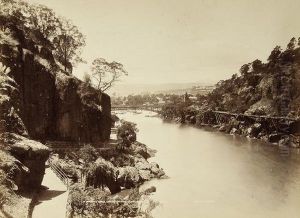John Watt Beattie Paintings
John Watt Beattie was an Australian photographer and antiquarian, born on August 15, 1859, in Aberdeen, Scotland, and passed away on June 24, 1930, in Hobart, Tasmania. He emigrated to Tasmania with his family in 1878, settling in a region that would become the central subject of his extensive photographic work. Beattie's passion for photography and his fascination with Tasmania's landscape, people, and burgeoning industries led him to become one of the most prominent photographers of his time in the region.
Beattie's work is characterized by its diverse subject matter, ranging from portraits and landscapes to industrial and historical scenes. In the late 19th and early 20th centuries, his photographs played a crucial role in promoting Tasmania as a destination for tourists and immigrants, capturing the island's rugged beauty and unique cultural heritage. He was also deeply interested in the history of Tasmania, particularly its convict past and the indigenous Tasmanian people, who were believed to have become extinct in the late 19th century. Beattie collected artifacts, photographs, and documents, creating a significant historical record and contributing to the preservation of Tasmania's heritage.
In addition to his photography, Beattie was an active member of the Tasmanian community. He lectured extensively on Tasmanian history and was involved in various societies dedicated to natural history and conservation. His efforts in these areas helped to foster a greater appreciation for Tasmania's natural environment and its preservation.
Beattie's legacy is preserved through his photographs, many of which are held in public and private collections around the world. His work provides a valuable window into Tasmanian life and landscapes during a period of significant change and development. John Watt Beattie's contributions to photography and historical preservation have made him a celebrated figure in Tasmania, where he is remembered as an important cultural historian and artist.
